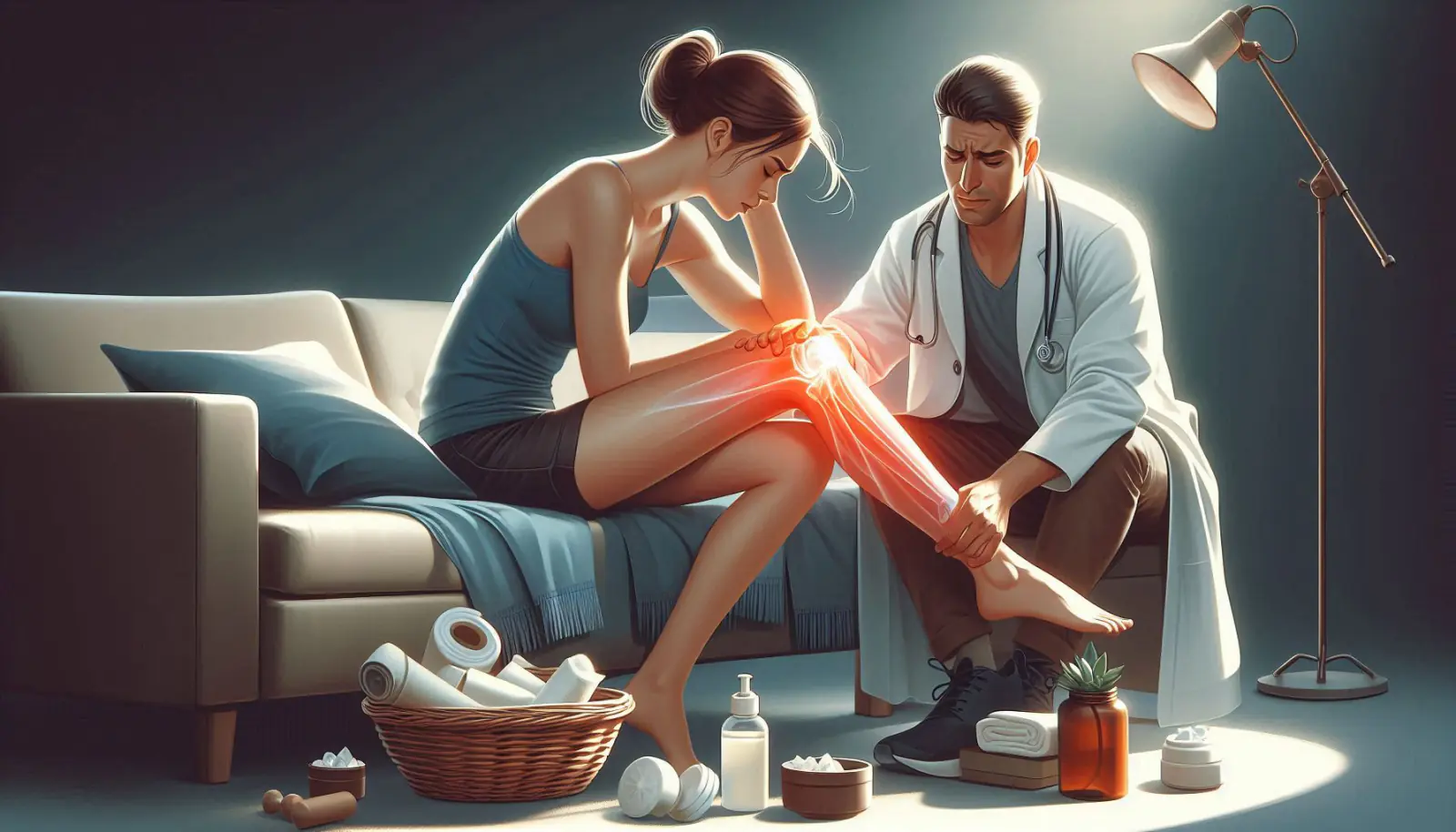How to Relieve Leg Pain?
To relieve leg pain, rest and elevate the leg, apply an ice pack, and take over-the-counter painkillers if needed. Gentle stretching, massage, or warm compresses may help. Consult a doctor for persistent or severe pain.

Leg pain can range from mild discomfort to severe, debilitating aches that interfere with daily activities. It’s essential to identify the cause of the pain and take appropriate measures to address it. Regardless of whether your leg pain is caused by overuse, injury, or an underlying medical condition, there are several remedies and treatments available to help alleviate it.
If you’re experiencing leg pain and need fast and effective relief, try Ibugesic Plus, a trusted solution for pain relief and inflammation. Always consult your doctor before you begin taking any medication.
Understanding Leg Pain
There are many causes of leg pain, ranging from muscle strain to joint and nerve problems to vascular conditions. The first step in effective treatment is to identify the cause. Below are some ways to relieve leg pain and make you more comfortable.
Before we dive into the methods, it’s crucial to remember that consistency and the right approach will lead to better results.
1. Rest and Elevation
If you’re suffering from overuse or minor injuries, enough rest for your legs will significantly reduce your pain and aid in healing. If you have swelling, temporarily elevate your leg on a pillow or cushion to reduce it and improve blood circulation. Try to rest as much as you can until the pain goes away.
2. Apply Ice or Heat
Cold compresses such as ice packs can help reduce inflammation from acute pain or swelling if they are applied to the affected region for 15 to 20 minutes every few hours. If the pain is caused by muscle stiffness or cramps, applying a warm compress or taking a warm bath will assist in relaxing the muscle and may ease the pain.
3. Light and Stretching Exercises
Gentle stretches can improve flexibility and alleviate tension in the muscles. For example, calf stretches or hamstring stretches can help if you’re experiencing tightness. Low-impact exercises such as walking or yoga can also aid in improving circulation and reducing pain over time.
4. Over-the-Counter Pain Relief
Medications like Ibugesic Plus provide fast-acting relief from leg pain and inflammation. Its anti-inflammatory properties make it an ideal choice for mild to moderate pain. Make sure to always follow the dosage instructions and always consult your healthcare provider if you are not sure.
5. Massage Therapy
A gentle massage can help alleviate muscular tension, improve blood circulation, and promote relaxation in sore or tight muscles. A massage is much more effective when you use a soothing oil or lotion. You can discuss with a professional massage therapist if the pain is persistent.
6. Stay Hydrated
Dehydration can lead to muscle cramps, which may result in leg pain. If you’ve been physically active or have been exposed to hot weather, make sure you drink plenty of water throughout the day. Proper hydration supports muscle function and helps prevent cramps.
7. Wear Comfortable Footwear
If you’re on your feet for long periods, improper footwear can contribute to leg pain. Select shoes that are comfy, with cushioning and good arch support. Don’t wear high heels or shoes without proper support for long periods.
8. Address Underlying Medical Conditions
If your leg pain is due to conditions such as varicose veins, arthritis, or sciatica, treating the root cause is crucial. Consult a doctor to develop a comprehensive treatment plan that may include medications, physical therapy, and suggestions for altering your lifestyle.
If your leg pain doesn’t go away or gets worse after these remedies, you should see a professional medical expert. The issue can be diagnosed by a healthcare provider and suitable treatment options can be suggested.
Leg pain shouldn’t hold you back from carrying out your daily activities. Keep Ibugesic Plus handy for effective pain relief and quick recovery. Consult your doctor to ensure it’s suitable for your needs.
If you follow these simple strategies and seek the right medical advice, you can effectively manage and reduce the pain in your leg, making your life healthier and more comfortable.









.jpg)









.webp)
























.webp)
























.webp)






.jpeg)





























